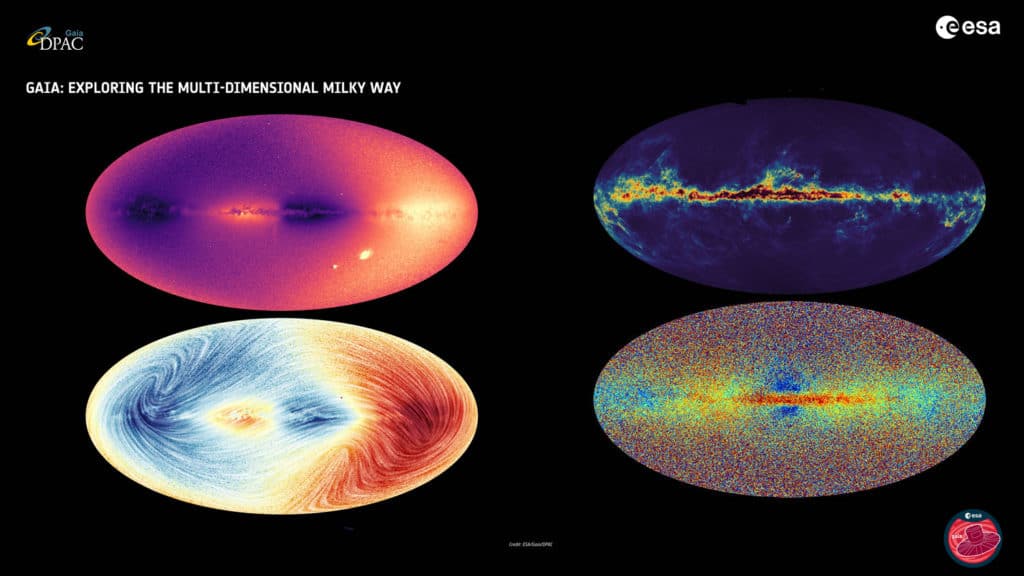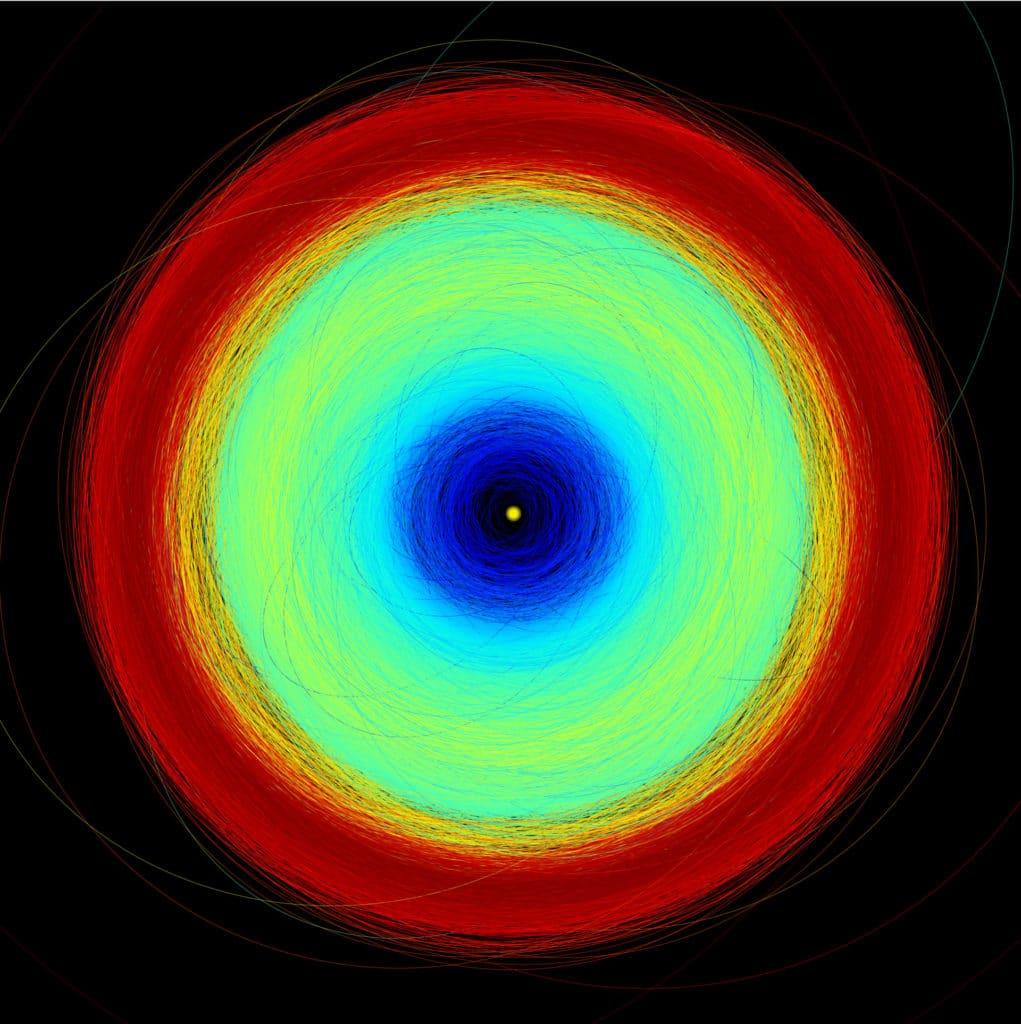Gaia is ESA’s mission to create the most accurate and complete multi-dimensional map of the Milky Way. Recently, it released a new treasure trove of data on the Milky Way- that describes strange ‘starquakes,’ stellar DNA, asymmetric motions, and other fascinating insights.
Gaia’s data release 3 includes new and updated details for about two billion stars in our galaxy. Chemical compositions, stellar temperatures, colors, masses, ages, and the speed at which stars travel towards or away from us are all included in the catalog (radial velocity). The freshly released spectroscopic data provided a lot of this information. It also has particular subsets of stars, like those that change brightness over time.

This data set contains the most comprehensive list of binary stars, asteroids, and planet moons in the Solar System, as well as millions of galaxies and quasars outside the Milky Way.
Starquakes
Gaia’s ability to identify starquakes is one of the most striking findings from the new data. A starquake is vaguely similar to an earthquake that changes the shapes of stars. These starquakes reveal more about the star’s internal workings.
In thousands of stars, Gaia discovered intense nonradial starquakes. It also unveiled unusual vibrations in stars that had never been observed before. According to current theory, these stars should not have any quakes; however, Gaia detected them on their surface.
The DNA of stars
The composition of the stars can potentially tell about their birthplace and their journey afterward, hence the history of the Milky Way. With today’s data release, Gaia is revealing the largest chemical map of the galaxy coupled to 3D motions, from our solar neighborhood to smaller galaxies surrounding ours.
Some stars consist of heavier metals. After death, these stars release these metals into the gas and dust between the stars, called the interstellar medium, out of which new stars form. Active star formation and death generate an environment enriched with metals. Hence, a star’s chemical composition is similar to its DNA, giving us crucial information about its origin.
Gaia also revealed stars with primordial material. Metals are more abundant in stars closer to the galaxy’s center and plane than in stars farther away. Based on their chemical composition, Gaia could identify stars that originated in galaxies other than our own.
Alejandra Recio-Blanco of the Observatoire de la Côte d’Azur in France, a member of the Gaia collaboration, said, “Our galaxy is a beautiful melting pot of stars. This diversity is extremely important because it tells us the story of our galaxy’s formation. It reveals the migration processes within our galaxy and accretion from external galaxies. It also shows that our Sun and we all belong to an ever-changing system, formed thanks to the assembly of stars and gas of different origins.”
Binary stars, asteroids, quasars, and more
A new binary star catalog details the mass and history of over 800,000 binary systems, while a new asteroid study of 156 thousand rocky bodies reveals more about our Solar System’s origins. Gaia also discovers about 10 million variable stars, enigmatic macro-molecules between stars, and quasars and galaxies beyond our cosmic neighborhood.

Timo Prusti, Project Scientist for Gaia at ESA, said, “Unlike other missions that target specific objects, Gaia is a survey mission. This means that Gaia is bound to make discoveries that other more dedicated missions would miss while surveying the entire sky with billions of stars multiple times. This is one of its strengths, and we can’t wait for the astronomy community to dive into our new data to discover more about our galaxy and its surroundings than we could’ve imagined.”
Gaia’s data release 3 was presented during a virtual media briefing at https://www.esa.int/ESA_Multimedia/ESA_Web_TV
https://news.google.com/__i/rss/rd/articles/CBMiXmh0dHBzOi8vd3d3LnRlY2hleHBsb3Jpc3QuY29tL2VzYS1nYWlhLXJlbGVhc2VzLW5ldy10cmVhc3VyZS10cm92ZS1kYXRhLWFib3V0LW1pbGt5LXdheS80ODA4Ny_SAQA?oc=5
2022-06-14 08:44:54Z
1454182641
Tidak ada komentar:
Posting Komentar